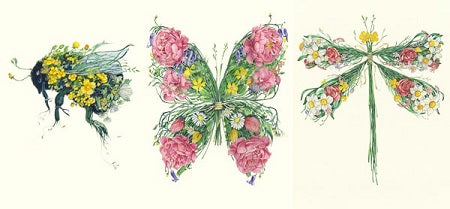A Botanists Dream

As beautiful and essential to nature woodlands are, this environment does pose a problem for many plant species, which - in turn - affects many animals. The problem lies in the dominant nature of trees. With their sheer size and close proximity, all striving for sunlight, everything below the canopy often has to make do in the shade. Now that may be fine for fungi and bluebells, but most plants need a lot of light to photosynthesise and grow, so they simply can't compete beneath such tree giants. Once the trees are taken out of the equation - which is exactly what happened when early man began to fell the ancient wildwood to make way for farming - nature has a very different playing field.
"How does the Meadow-flower its bloom unfold?
Because the lovely little flower is free
Down to its root, and, in that freedom, bold.”
A wild meadow in the midst of summer is a magical thing: the air is sweet with the collective bouquet of moist wild grasses and thriving wild flowers, our all important bees tirelessly buzz from poppy to buttercup with a peaceful hum, and deep within the grasses the carnivorous ladybirds crawl the countless stems in search for succulent aphids. This beauty inspired the new DM Bugs and Butterflies Collection, depicting many meadow-dwellers.
Where there's an abundance of creepy-crawlies, there's birds who add to the ambience with their delightful calls and song, such as those in the DM Songbirds Collection. As the sun dips to the horizon, a barn owl - the meadow being its ideal hunting ground - silently hovers over the grassland in search of field mice.
The serene beauty of a meadow has sparked the imagination of many an artist. Monet, who's brush strokes come into their own when capturing the rich and vibrant essence of a meadow, has a number of meadow themed masterpieces, like this one. Then we have Van Gogh who still manages to portray the floral feel of a meadow in his monotone pencil drawing, Meadow with Flowers. But nowhere was the microcosmic nature of a meadow better captured than in Dürer's The Great Piece of Turf, in which Dürer composes a remarkable piece of art which solely centres around a chunk of turf within a meadow.
Alas, the meadows we celebrate so fondly here are in decline, with England and Wales having lost 97% of the the hay meadows which had previously flourished for centuries, as our farming methods have made way for more intensive grasslands instead - which limits the habitat to… well, just grass. Thankfully the Wildlife Trusts are attempting to save the remaining meadows we have, and some conscientious farmers are even starting to allocate part of their land for more traditional hay field methods, so here's hoping the artists of the future will still be inspired by the natural beauty of a meadow.
